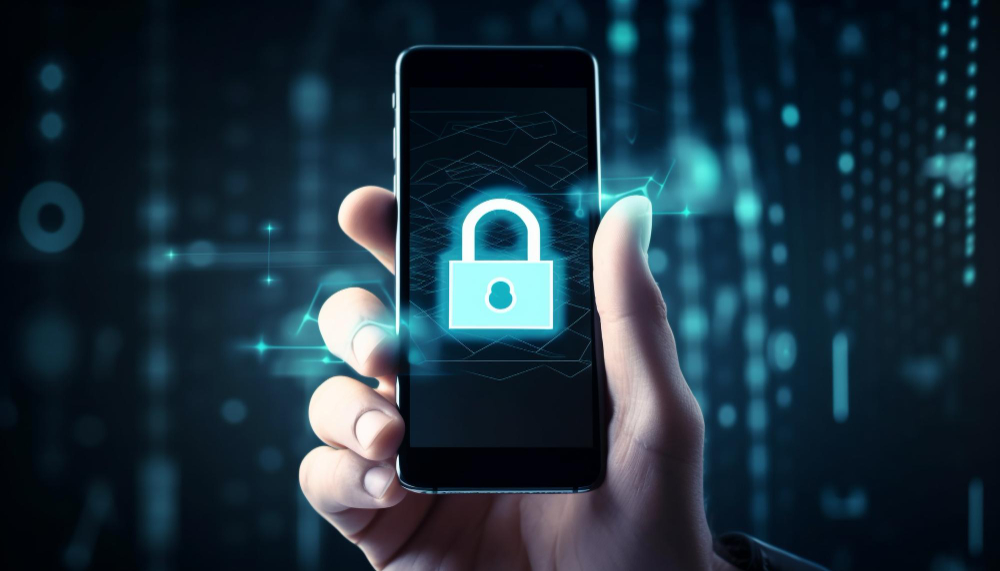Ransomware severely threatens individuals, businesses, and even governments online. It’s a type of malware that works by encrypting the victim’s data at ransom so they can’t access it. Once ransomware infiltrates a system, it renders all crucial information or files inaccessible, prompting cybercriminals to demand money from the victims to regain access to the data.
To learn more about what is ransomware and how you deal with it, keep reading this article!
What is Ransomware?

Ransomware is a type of malware that locks a system, denying access to the victim. It is malicious software that operates by encrypting files, even the entire hard drive, rendering the data inaccessible without the decryption key held by the attackers.
A system with significant vulnerabilities will make it easier for attackers to operate ransomware. So, it’s crucial to follow robust cybersecurity practices, regularly check systems, and quickly fix any weaknesses to withstand potential attacks.
How Does Ransomware Work?

Ransomware is usually distributed through email spam campaigns. This malware needs a way to get into a computer, and once it’s there, it stays on the system until it finishes what it’s meant to do.
Ransomware operates by using asymmetric encryption (public key encryption). In this process, the attackers use a public key to encrypt the files and a corresponding private key held by the attackers for decryption. The attacker generates the unique key pair for each victim, with the private key stored on the attacker’s server.
The attacker then demands a certain amount of money from the victim. The request usually comes with a threat to permanently erase the encrypted data or disclose sensitive information if the ransom is not paid within a specified period.
The threat implies that the only way to decrypt or prevent data destruction is when the ransom is paid. While the standard practice involves the attacker releasing the private key to the victim only after receiving the ransom payment, recent campaigns have demonstrated variations in this approach.
What are The Different Types of Ransomware?

Various types of ransomware exist in the online world. When considering delivery methods, there are Ransomware as a Service (RaaS), automated delivery (not as a service), and human-operated delivery. If categorized by the impact of ransomware, it can involve data unavailability, data destruction, data deletion, and data exfiltration, as well as extortion.
The following terms further explain more about the ransomware variant:
- Locker Ransomware: Prevents access to victims’ data or systems entirely.
- Crypto Ransomware: Encrypts some or all of victims’ files.
- Scareware: Falsely convinces victims that their devices are infected, leading them to purchase software that may steal data or download additional malware.
- Extortionware (Leakware, Doxware, Exfiltrationware): Involves stealing victims’ data and threatening to make it public or sell it on the dark web.
- Wiper Malware: Mimics ransomware but erases data from victims’ systems even if ransom payments are made.
- Double Extortion Ransomware: Encrypts victims’ data and exfiltrates data to extort payment.
- Triple Extortion Ransomware: Encrypts data, exfiltrates it to extort payment and adds a third threat, often involving a DDoS attack or extortion of victims’ associates.
How to Detect Ransomware

Ransomware infection can be avoided by detecting it earlier. Using the right security software can significantly contribute to prevention. Another proactive measure is conducting vulnerability scans to identify potential weaknesses in the system. Together, these strategies create a robust defense against cybercriminals who exploit vulnerabilities for ransomware attacks.
How to Defend Against Ransomware

There are several ways to defend and prevent ransomware on a device. Read the list below:
Back up your data
Regularly backing up your data can ensure that your information is securely saved, even in the unfortunate event of a ransomware attack. It is recommended to store backup copies in the cloud or on an external hard drive for enhanced security.
Secure your backups
Besides securing the source of your data, it is highly advised to secure the backup files as well. This is done by ensuring that your backup data is not accessible for modification or deletion from the systems. This provides comprehensive protection against potential threats and facilitates a more resilient defense strategy.
Use security software and keep it up to date
Having security software will significantly help you in detecting malware. Use a trusted security program, and ensure that it is updated regularly, as the types of ransomware continually evolve. Additionally, consider enabling automatic updates to provide continuous protection against the latest malware variants.
Practice safe surfing
Be cautious about where you click online. Avoid responding to emails and text messages from unfamiliar senders, and only download apps from sources you trust. This is crucial because cyber attackers frequently use tricks to persuade you into installing harmful files through tactics like social engineering.
Only use secure networks
It’s advisable to avoid public Wi-Fi networks, especially when accessing essential files. Public Wi-Fi can be less secure, making it easier for cybercriminals to intercept your data. If you need to access sensitive information or conduct important transactions, consider using a Virtual Private Network (VPN) to establish a secure connection.
Stay informed
Ransomware threats keep evolving. Stay updated on the latest ransomware variants because cyber attackers continually develop new techniques and strains. Being informed about these growing threats is essential for maintaining a proactive defense.
Implement a security awareness program
Do security awareness training for all members of your organization to help them steer clear of phishing and other social engineering attacks. Conduct routine drills and tests to ensure that the training is effectively implemented.
Steps for Responding to a Ransomware Attack

What if your device has already been attacked by ransomware? Here are the steps to respond:
Disconnect your devices
Disconnect devices if there’s a slight sign that your data system is ransomware-infected. This process includes disconnecting network and data cables, USBs, and dongles and deactivating wireless connections like Wi-Fi, cellular data, and Bluetooth. The aim is to hinder the ransomware’s communication and restrict its ability to infect other devices.
Stop the ransomware
To stop ransomware, begin by capturing images of essential details, such as the ransom note, web links, emails, or Bitcoin addresses, using an unaffected mobile device or camera. For Apple devices or unresponsive devices, power off by holding down the power button.
Run a malware scan
Conducting malware scans helps detect potential threats early on. You can use either paid antivirus software or utilize the built-in malware scanner on your system. Remember to document or make notes of any suspicious programs identified during the scanning process.
Write down key details
Write down key details of the attack, including file information and the affected devices. This ensures you remember how the ransomware attack occurred, allowing you to report it to professional help and make necessary claims.
Get professional help
Contacting professionals to help respond to ransomware attacks. Reach out to cybersecurity experts or specialized professionals who can assess the extent of the breach and guide you through the necessary steps for recovery.
Their knowledge guarantees a more efficient and comprehensive reaction, reducing the potential harm from the ransomware event.
Notify and report
Take a systematic approach to address a cybersecurity incident: engage legal support to notify stakeholders, inform affected parties like staff and family, report ransomware to professionals, comply with data breach reporting laws if necessary, and contact your financial institution if there are concerns about compromised banking details.
Protect yourself from future ransomware attacks
Experiencing a ransomware attack is something to avoid happening a second time. Learn from the experience and safeguard yourself by taking preventative measures, including updating your devices, utilizing multi-factor authentication, and adopting additional protective measures.
Frequently Asked Questions
Are individuals or businesses more likely to be targeted by ransomware attacks?
Both individuals and businesses are vulnerable to cyber ransomware attacks, although the likelihood of being targeted can vary depending on the motives and strategies of the attacker. In the past, businesses and organizations have frequently become primary targets due to the potential for larger payouts and the critical nature of their data.
Is it possible to recover data without paying the ransom in a ransomware attack?
Yes, it is possible to recover your data without fulfilling the ransom demand. Options include utilizing regular data backups, employing security software and tools designed for recovery, accessing decryption tools provided by cybersecurity experts, and consulting with professionals for a comprehensive recovery strategy.
What are the common entry points for ransomware into a computer or network?
Ransomware commonly enters computers or networks through phishing emails or attachments, malicious websites, malvertising, outdated software, insecure Remote Desktop Protocol (RDP) configurations, unsecured networks, drive-by downloads, and infected external devices.
Conclusion
Learning what is ransomware goes beyond expanding your knowledge of cybersecurity; it also equips you with the tools to prevent it. With the continual rise in ransomware variants, staying updated on this malware will enhance your cybersecurity awareness and empower you to implement effective preventive measures.
If you need assistance with safe data management to avoid ransomware, contact Fluxgate today!
